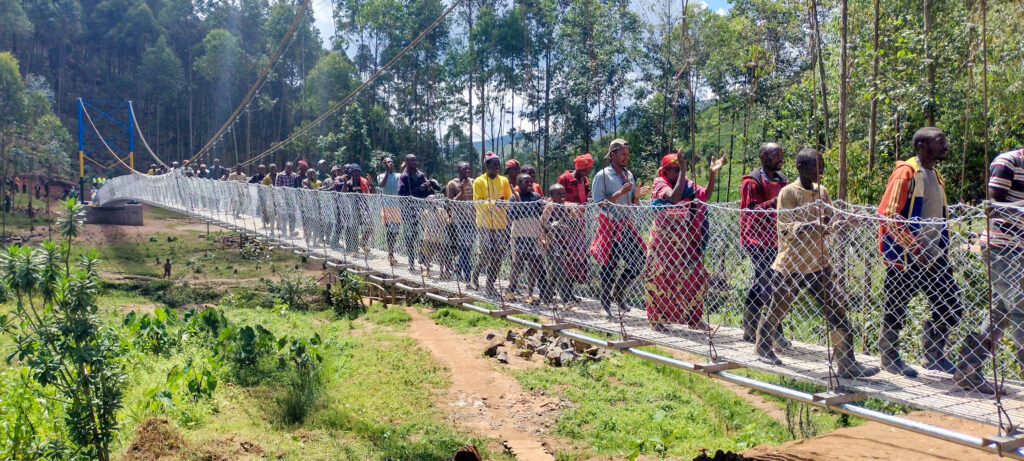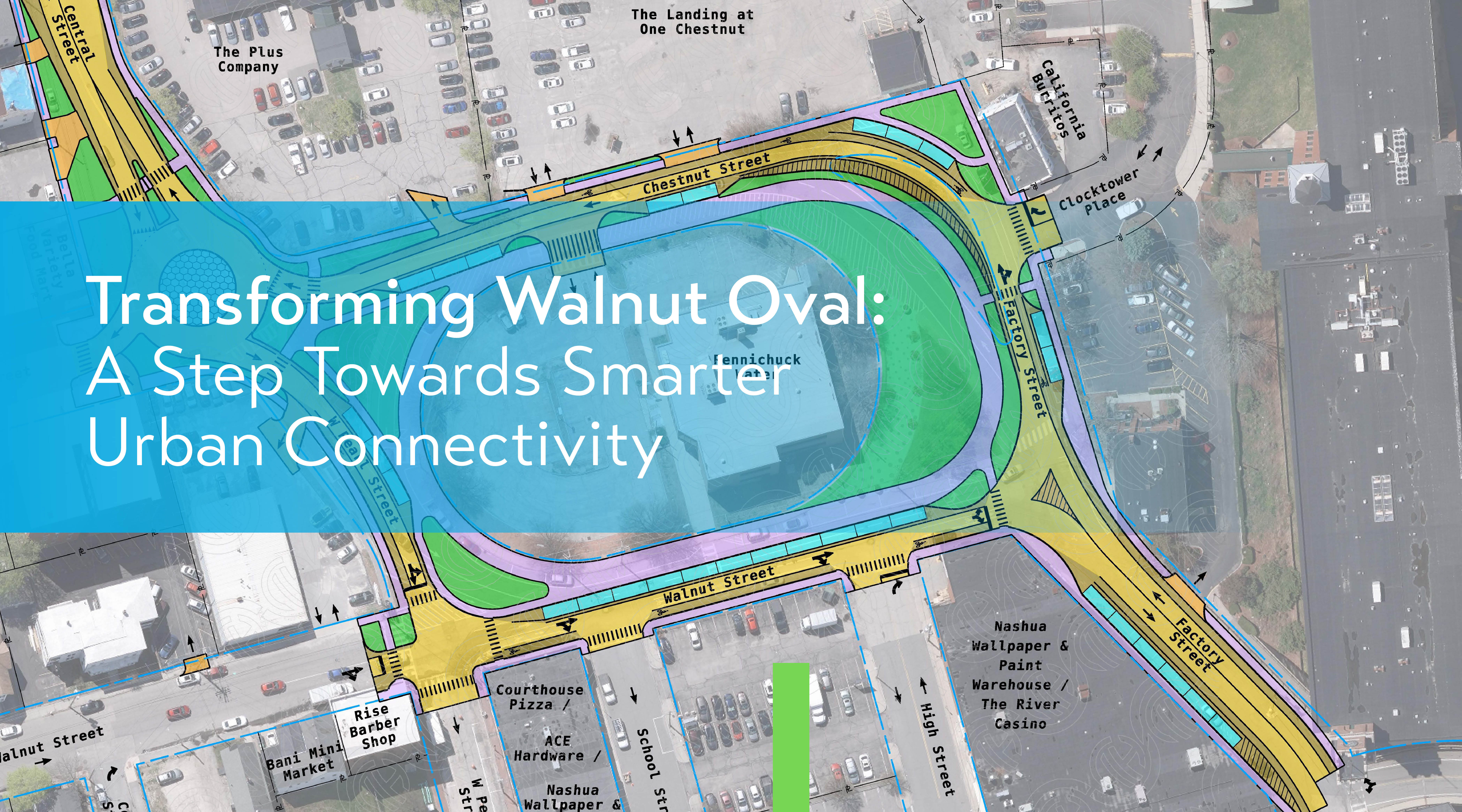
My opportunity of a lifetime happened a second time! Once again, I was blessed with the opportunity to combine my passions of service and structural engineering when I traveled to Rwanda in May 2023. This was my second trip as part of a team organized by Bridges to Prosperity (B2P) to build a trailbridge for a rural Rwandan community. It was another chance to be a part of B2P’s mission to build bridges to better lives in rural communities. B2P is a non-profit organization that envisions a world where poverty caused by rural isolation no longer exists; they build trailbridges to provide year-round access to healthcare, education, markets, and jobs for thousands of people, resulting in improved lives for generations to come.
I first traveled to Rwanda in February 2022, which you can read about in my blog, An Engineer’s Journey to Rwanda to Build a Life-Changing Bridge. This led to a second build opportunity for me: because I was an alumna of one of B2P’s bridge builds, I was eligible to be part of their first ever Alumni Build.
The Differences Between my Two Trips
The preparation leading up to the build was very similar to the first time, but the biggest difference between my first trip and my second is that I had to fundraise for the Alumni Build. My first trip had previously been paid for by companies that had been planning to send an employee but could no longer do so, and I only had to get myself there to be a part of the team. This time around, I had to raise $8,000 that would go towards the Kavavu (Ruhanga) Suspension Trailbridge (getting myself there was on top of that!). This meant that I was more invested in the trip and the build because I helped raise the money to fund it, and I did not want to disappoint all my donors who helped me raise a total of $8,019!
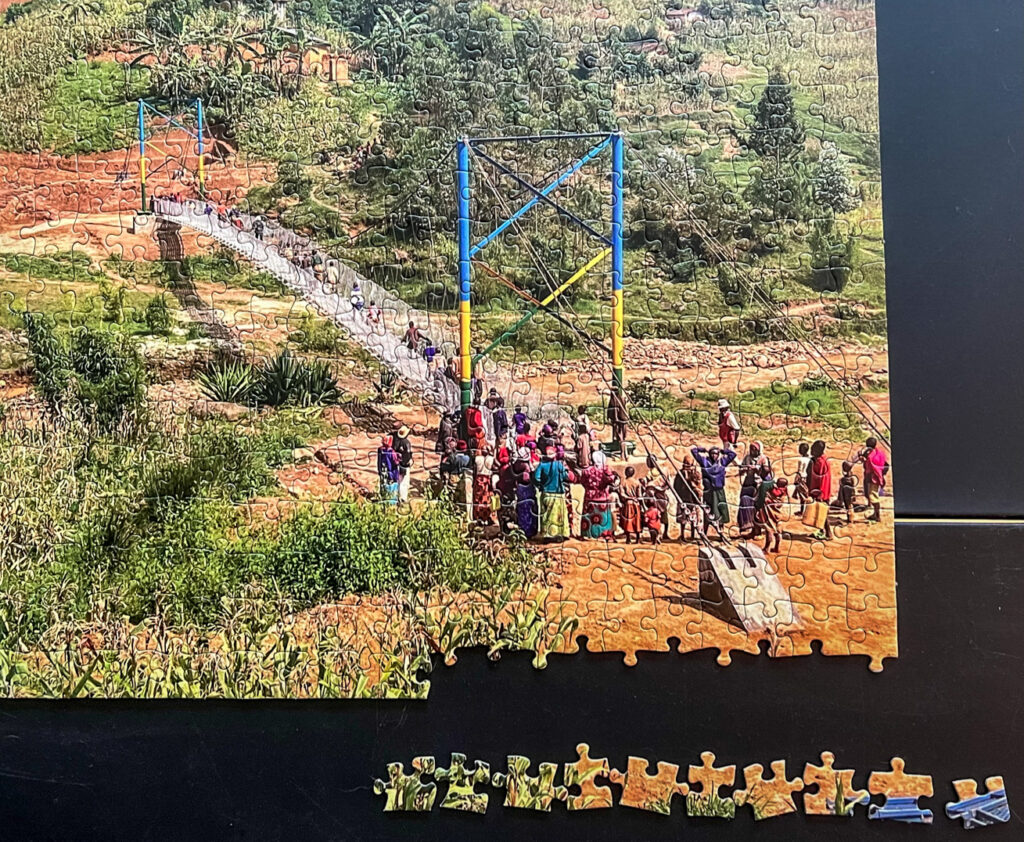
Another difference between my two trips was the team. My first build was comprised of nine people from around the US – pretty neat! The Alumni Build was comprised of eight people from around the world – even neater! The final Alumni Team was comprised of five alumni (three from the US, one from Scottland, and one from Denmark) and three people from Engineers in Action (EIA) (two from the US and one from Eswatini). EIA is another non-profit organization that builds footbridges for isolated communities, but their bridge work was mainly limited to suspended bridges. Their members joined our build to learn how to build a suspension bridge to broaden their capabilities and be able to bring footbridges to more communities in need. It was inspirational to see one non-profit assisting another one with a similar mission to help the total impact of both organizations.

With our Alumni Team, not only did we have to traverse time, lingual, and cultural differences between the Rwandans and ourselves, but between each other too. Two memorable moments of my trip were when I had to navigate the language barrier – and they were not moments that I anticipated. The first is when I had to have Earnest, the Rwandan Foreman who spoke English, translate what Tommy, the Scotsman, was saying over the walkie talkie when we were setting the cable sag because I couldn’t understand Tommy’s English, but I could understand Earnest’s. The second was when Tommy had to repeat the word “turnbuckle” to Ernest because Ernest could not understand what I was saying…I didn’t know how else to pronounce it! But as soon as Tommy said the word, Ernest knew what I was looking for. The diverse team helped to broaden my experience and pushed me to better work with my teammates from different backgrounds. This is definitely a skill that is transferable to my work in the US!

Finding Similarities between my Two Trips
There were many similarities between the Alumni Build and the Munini I Build, including the type of bridge. I was once again helping build a suspension bridge alongside a community of Rwandans, but this bridge was approximately 223’ long, about 17’ longer than the Munini I suspension bridge. Only me and one other alumnus had been on a suspension build previously, so it was a new bridge type for most of our team. This time around, instead of being the Construction Lead for the team, I jointly took on the roles of Project Lead and Logistic Lead with Tommy, so we could better coordinate with everyone and make sure we were ready for our build. This pushed me to be more organized and work towards bringing the team together, so that everything went smoothly once we were in Rwanda and could act as a cohesive team while we were there. We took information and opinions from the team, and then made final decisions together. I will admit there were some bumpy moments when personalities clashed, but we still came together for a successful build.
Additional similarities for me were the drive to the accommodation house and getting to the build site. The Alumni Build accommodation house was about a six-hour drive south of Kigali, the capital city. So once again, I got to enjoy the beautiful country and see the friendly Rwandans on the drive. To get to the build site from our accommodation house, we had a 15-minute drive and then a 30-minute hike from where we parked, which was similar to the Munini I build. What I learned though was that this seems to be an exception to builds and not the norm; it was just normal for me! The other team members said that they could nearly drive up to their last build site with a one-to-two-minute walk to the bridge. I didn’t mind the hike though because it allowed me to relish in the countryside even more.
Admiring the Locals
The Rwandans were just as hard-working and kind as I remembered too, both as part of the build and in our everyday interactions with them. They are very resilient. Prior to
our arrival and the first week we were there, the country experienced devastating floods and landslides from heavy rain. While we were there, we saw them clearing and rebuilding roads that had been affected by landslides. During the weekend between our build weeks, we traveled to Lake Kivu through the countryside. Part of the road we were supposed to drive on had been completely washed away. One of the locals helped get our safari truck turned around, and then he proceeded to jog in front of us to show us the new path around that they had created! He didn’t expect anything in return; he was just helping us out. Amazing and inspirational!
The kids on this trip were just as excited to see us drive by every day to and from the build site; my favorite was a little boy who would wave out of his window and shout “bye” to us! We again visited a local school and brought them a few gifts like soccer balls. I think they liked the bubbles we brought the most. I loved seeing how excited they got over something as insignificant as bubbles. The people of Rwanda make me want to be a better person, work harder, and appreciate the small things that I have.
Surprising Delights
On my first trip, there were a handful of things that surprised me as I explained in my first blog. Some of these stayed true during my second visit, while others deviated from my first experience. When thinking back on both trips, I can list even more things that surprised and delighted me.
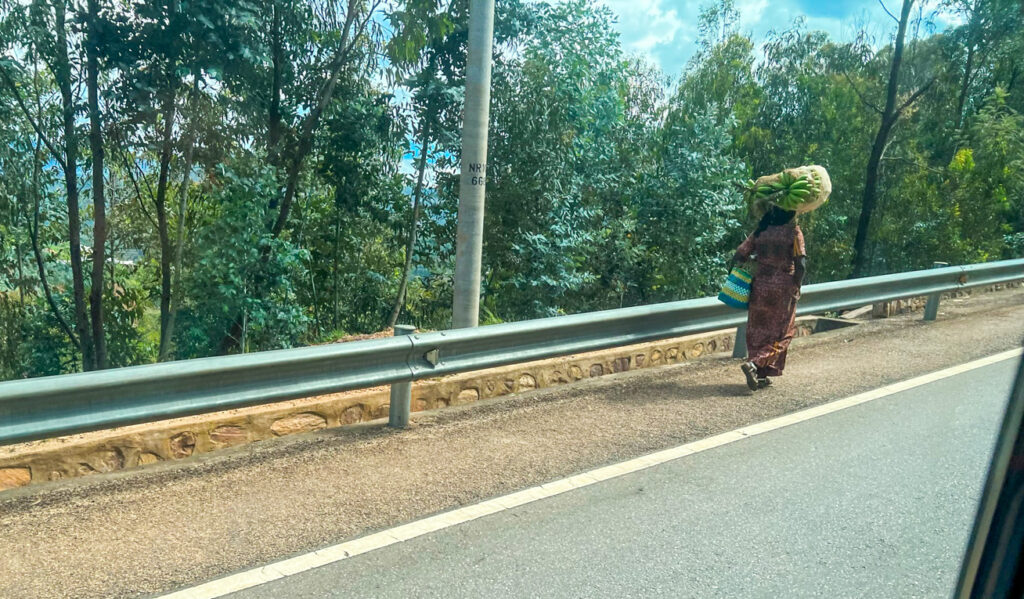
- Still true: a lack of wild animals around, but plenty of farm animals;
- Took two trips to find: an overpass bridge that I found while walking through Kigali to the Genocide Memorial;
- Still amazes me:
- Some of their scaffolding, and building bracing materials and methods;
- That plastic bags are banned in the country;
- That restaurants serve metal and glass straws;
- How clean the streets are;
- Umuganda – a community cleanup time held on the last Saturday of every month from 8am – 11am. Family, friends, and neighbors in collaboration with local authorities come together to clean up their neighborhood, plant trees, build roads, build someone’s house or perhaps a local school building (read about it and its controversy here);
- Car-free Days in Kigali – from 7am-10am the 1st and 3rd Sundays of the month, many roads are close off to cars to encourage people to walk, run, and exercise with an intent of keeping healthy and promote a green-city;
- Flags and banners reading “Kwibuka29 kwibuka twiyubaka,” or “Remember29 remember-unite-renew.” Each year, these banners are hung across the city from April 7th through July 4th in memory of the 1994 Genocide;
- How hard-working, dedicated, and kind the people are; and
- That I got to help build two suspension bridges for rural communities in Rwanda!
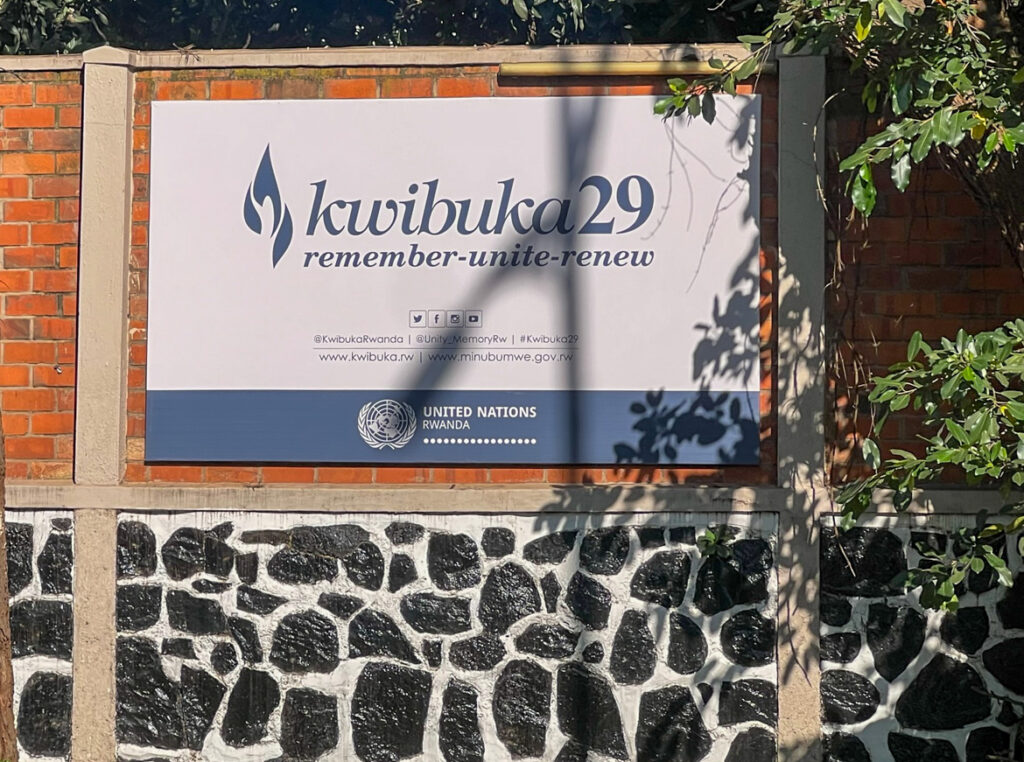
Even after two visits, I know that there are people, places, and experiences that I have missed out on. If I could go again, I would like to spend more time exploring other parts of the country and taking advantage of unique opportunities like seeing mountain gorillas. If I could go again, I would also partake in my favorite part of my trips: working alongside the remarkable Rwandans in the striking landscape to build a bridge together to provide safe passage for years to come. Here’s to hoping there will be more tips in my future!

